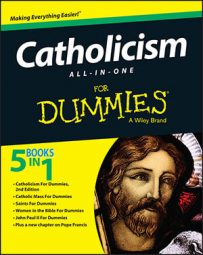According to the Catholic Church, Peter, a fisherman, was given the honor of leading the disciples after Jesus ascended into heaven 40 days after his Resurrection from the dead. Born Simon bar Jona (son of John in Hebrew), Jesus later called him Peter (from the Greek word petra, meaning "rock") to designate that he would be the "rock" on which Christ would establish the Church (Matthew 16:18).
Galilee (first century b.c.–a.d. 64)
Patron: diocese of Rome, fishermen
Feast day: June 29
The Gospel mentions Peter's mother-in-law, so he must have had a wife at some time. However, her name is never revealed, and she isn't even mentioned in the telling of Jesus's miraculous cure of her mother (Mark 1:29–31). This anonymity, combined with Peter's travels spreading the Good News, indicates that his wife may have passed away before Jesus called him to be an Apostle.
Of the 12 Apostles handpicked by Jesus, Peter was chosen to be in charge after Christ's Ascension to heaven. The other Apostles recognized Peter's authority and didn't challenge him as the head of the Church on earth. This is evidenced when John ran to the tomb ahead of Peter on Easter Sunday. He was younger and faster, but, although he got there first, he didn't go in; rather, he waited for Peter out of respect for his position as chief Apostle (John 20:4–5).
The Acts of the Apostles (the book following the Gospel of John) discusses several examples of Peter's leadership of the early Church, especially after Pentecost, when the Holy Spirit came upon the Apostles and the Virgin Mary, 50 days after Easter and 10 days after Jesus ascended to heaven.
Peter's authority also is shown when he presides over the election of Matthias to replace Judas (Acts 1:26) and when he leads the Council of Jerusalem (Acts 15). Even St. Paul (after his conversion and change of name from Saul) "goes to see Peter" out of respect for his position (Galatians 1:18).
Peter was martyred in Rome during the reign of Emperor Nero, who ruled from a.d. 54 to a.d. 68. It's believed that Peter was arrested and imprisoned not far from where the Roman Coliseum now stands. Today, the St. Peter in Chains Church marks the spot of Peter's arrest. It's a minor basilica with a great treasure: a statue of Moses that Michelangelo carved out of Carrara marble.
According to pious tradition, Peter didn't consider himself worthy of Christ-like crucifixion because he had denied his association with Jesus three times on Good Friday. Roman soldiers instead crucified him upside down.
Peter is buried on Vatican Hill, the present-day site of the Basilica of St. Peter, where the pope most often celebrates Mass.
Three churches have been built over this site through the centuries. The first was built in the fourth century by Constantine, who first proclaimed the joint feast of Peter and Paul. The second was built in the ninth century directly on top of the earlier edifice. Pope Julius II laid the cornerstone in 1506 and Pope St. Pius V finished the present-day basilica in 1615, again directly over the ninth-century church.
In 1938, Pope Pius XII permitted archaeologists to excavate under the basilicas, all the way to the first-century cemetery, which led to the discovery of the famous "Red Wall." The wall of one of the tombs is marked in red graffiti, noting the final resting spot of Peter and Paul. The first-century tomb lies directly under Bernini's magnificent 16th-century canopy over the high altar.

